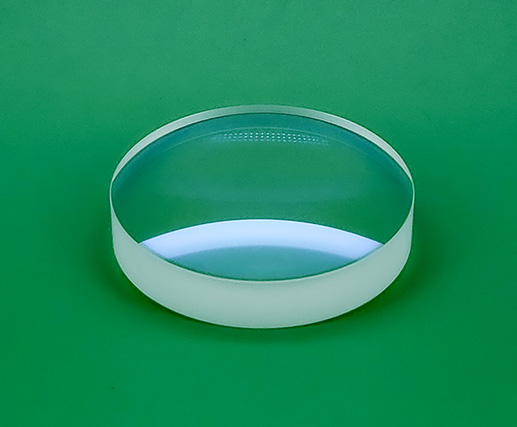Fused Silica Blank Materials
Fused silica is a special industrial glass made by purifying and melting natural crystalline quartz. It is a very outstanding basic material. Because Fused silica with wide transmission range shows excellent performance in extreme environments such as high temperature, chemical contact, and high pressure. Therefore, in terms of optical applications, fused silica is often made into optical elements such as optical lenses, optical windows and optical domes, which are used in fields such as optoelectronic instruments, military operations, aerospace and optical communications.
Chemical properties
All other optical glasses has added dopants to lower the melting temperature and change the optical, thermal and mechanical properties. The SiO2 content of fused silica is greater than 99.5%, almost no impurities. Fused silica with better uniformity is called "pure glass". The purity of fused silica affects its optical properties, such as transmittance and refractive index. Therefore, attention should be paid to the content of bubbles or inclusions in the fused silica blank material for fear that bubbles and inclusions might affect its optical performance. Except for hydrofluoric acid and hot phosphoric acid, fused silica hardly reacts with other acids. At high temperatures, fused silica is also chemically stable.
Optical performance
In the infrared, visible, and ultraviolet spectrum ranges, fused silica has high transmittance. According to different transmittance, fused silica blanks can be divided into JGS1, JGS2 and JGS3. In the ultraviolet spectrum, the transmittance can reach more than 90%, which can be used instead of BK7. In the visible and infrared spectrum range (400~1100nm), the transmittance exceeds 92%. The transmittance can reach 98% after double-sided coating. Fused Silica has high damage resistance to ultraviolet or other high-energy radiation. It also has a high laser damage threshold. Compared with other glasses, its refractive index is lower, which is affected by temperature and material purity.
Physical properties
Fused silica is hard and resistant to scratches. After molding, grinding and polishing, it can be customized into precision optical lenses, optical windows, optical domes, optical filters and optical prisms.
Fused Silica has outstanding thermal stability, extremely small thermal expansion coefficient. It can withstand severe temperature changes and has stronger shock resistance than any other refractory material. It can be used in an environment of 1100~1200℃ for a long time, and the use temperature can reach 1400℃ in a short time. The thermal conductivity and electrical conductivity of fused silica are low.
Due to high pressure resistance of fused silica, it can be used as a protective covering and used in harsh environments with high temperatures.
Applications
Fused silica can be used as windows of various instruments with strict environmental requirements. It also can be used in high-tech equipment such as military reconnaissance, optical communications, laser technology and precision optoelectronic instruments. For example, fused silica can filter ultraviolet rays to protect internal sensors. So fused silica is widely used as an optical element on spacecraft and space shuttles.
What kinds of optical components of fused silica do we offer?
We provide with
Fused Silica Blank materials
Fused Silica spherical lenses, including fused silica plano convex lenses, fused silica plano concave lenses, fused silica meniscus lenses, custom spherical lenses and other types of optical lenses.
Fused Silica prisms, including fused silica rectangular prisms, fused silica dove prisms, fused silica beam splitters, fused silica cube prisms and custom fused silica prisms.
Fused Silica cylindrical lenses, including fused silica plano convex cylindrical lenses, fused silica plano concave cylindrical lenses and other custom cylindrical lenses.
Fused Silica windows, including UV Fused Silica windows and IR Fused Silica windows.
Fused Silica mirrors, including Fused Silica mirrors(Flat) and Fused Silica spherical mirrors.



















